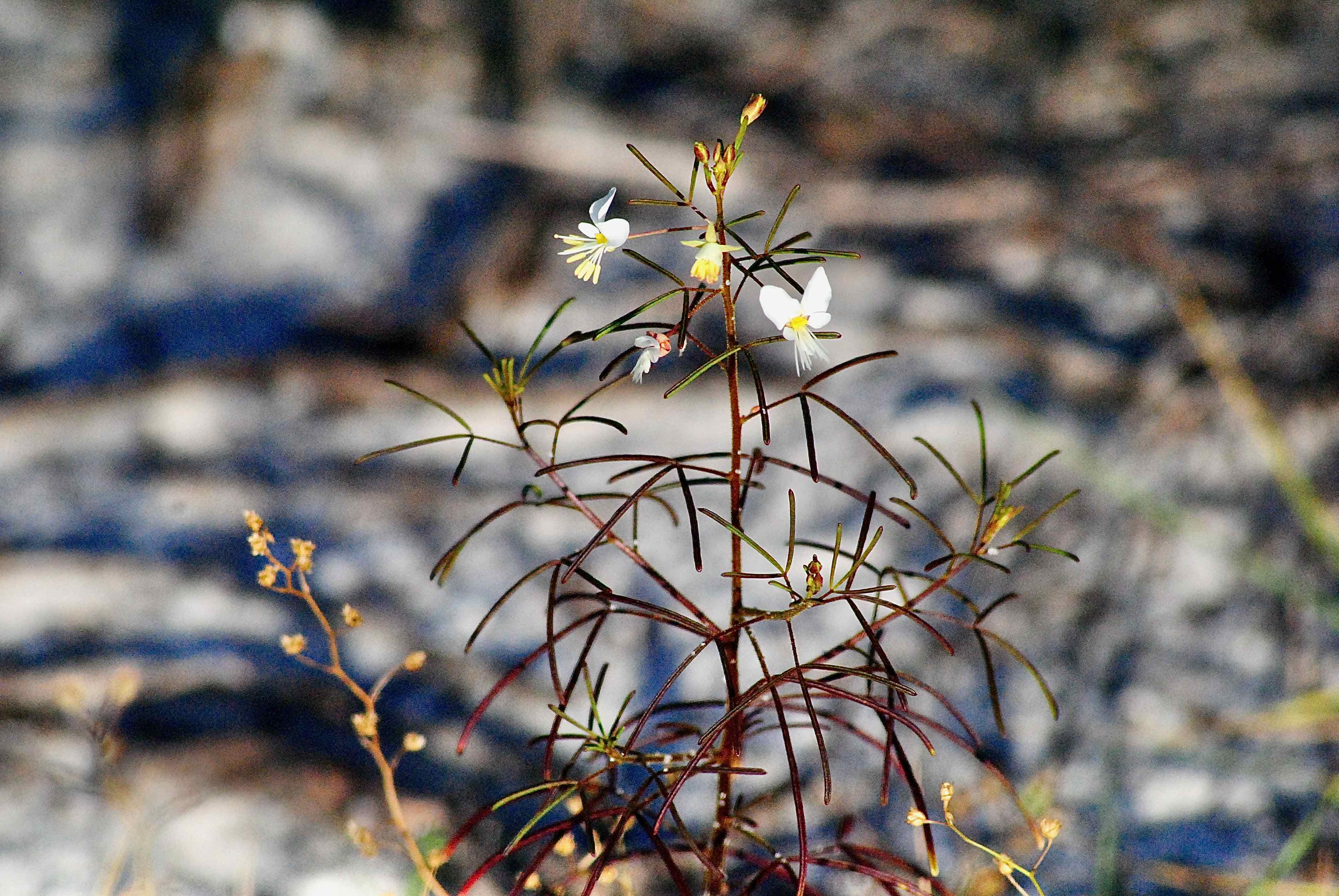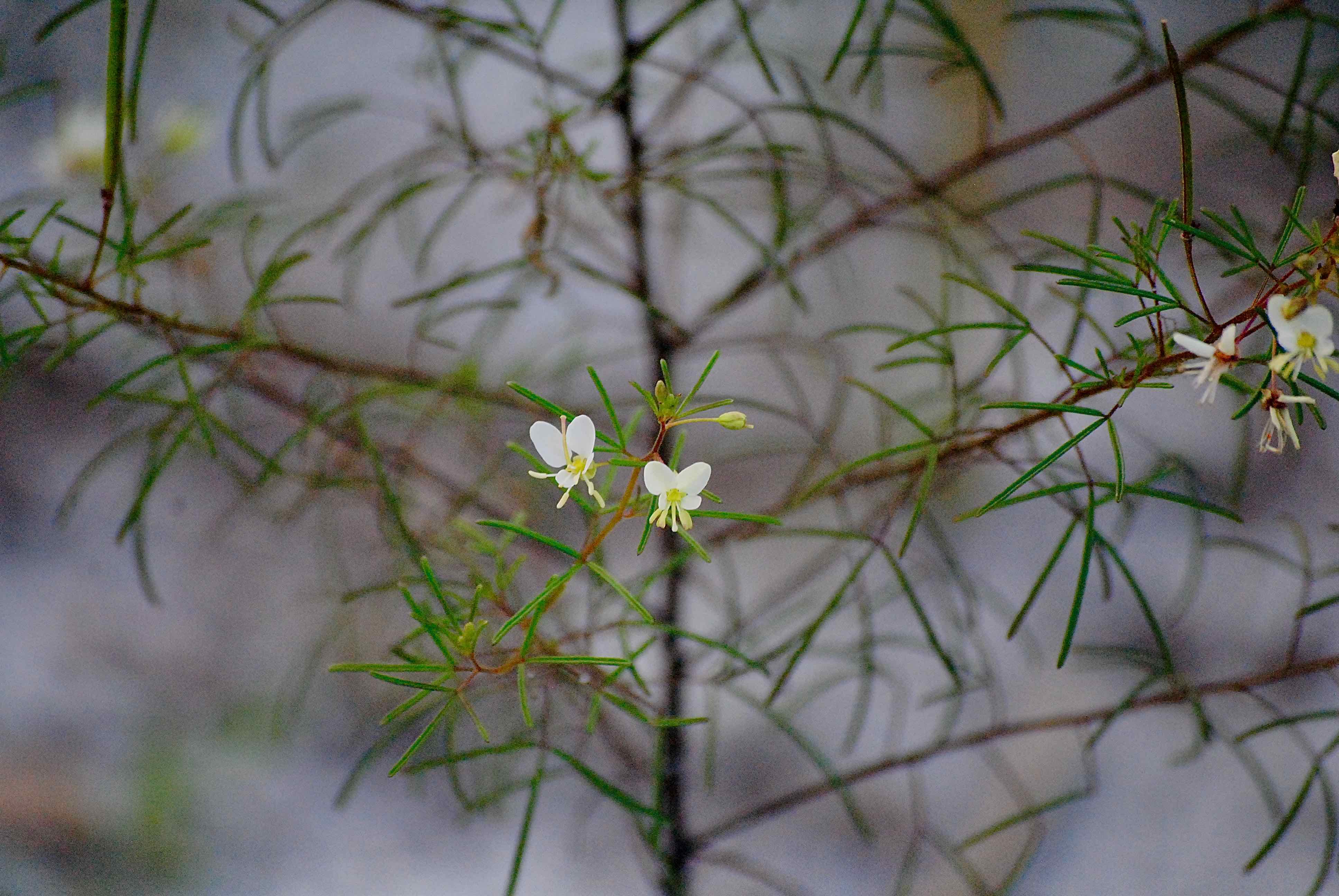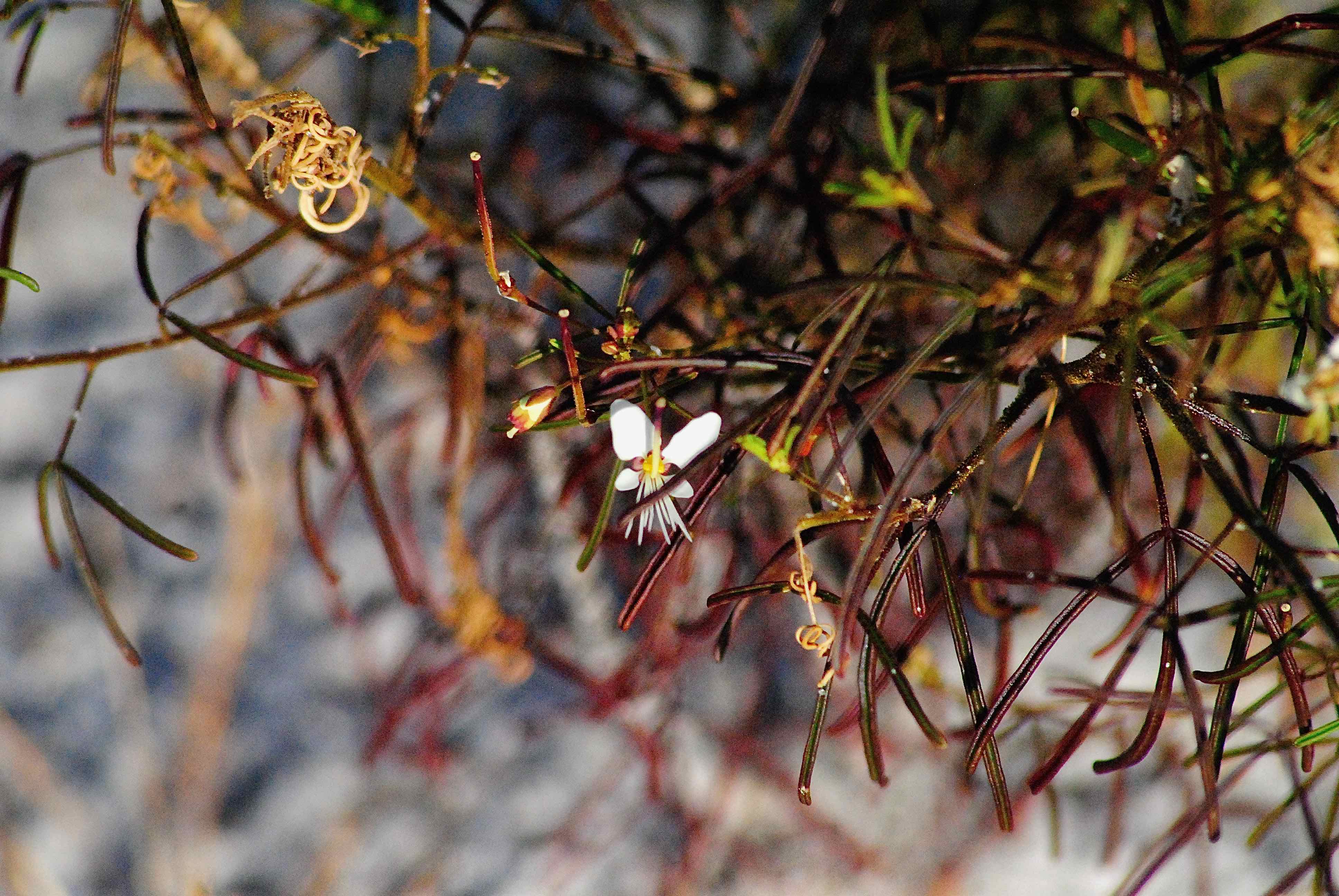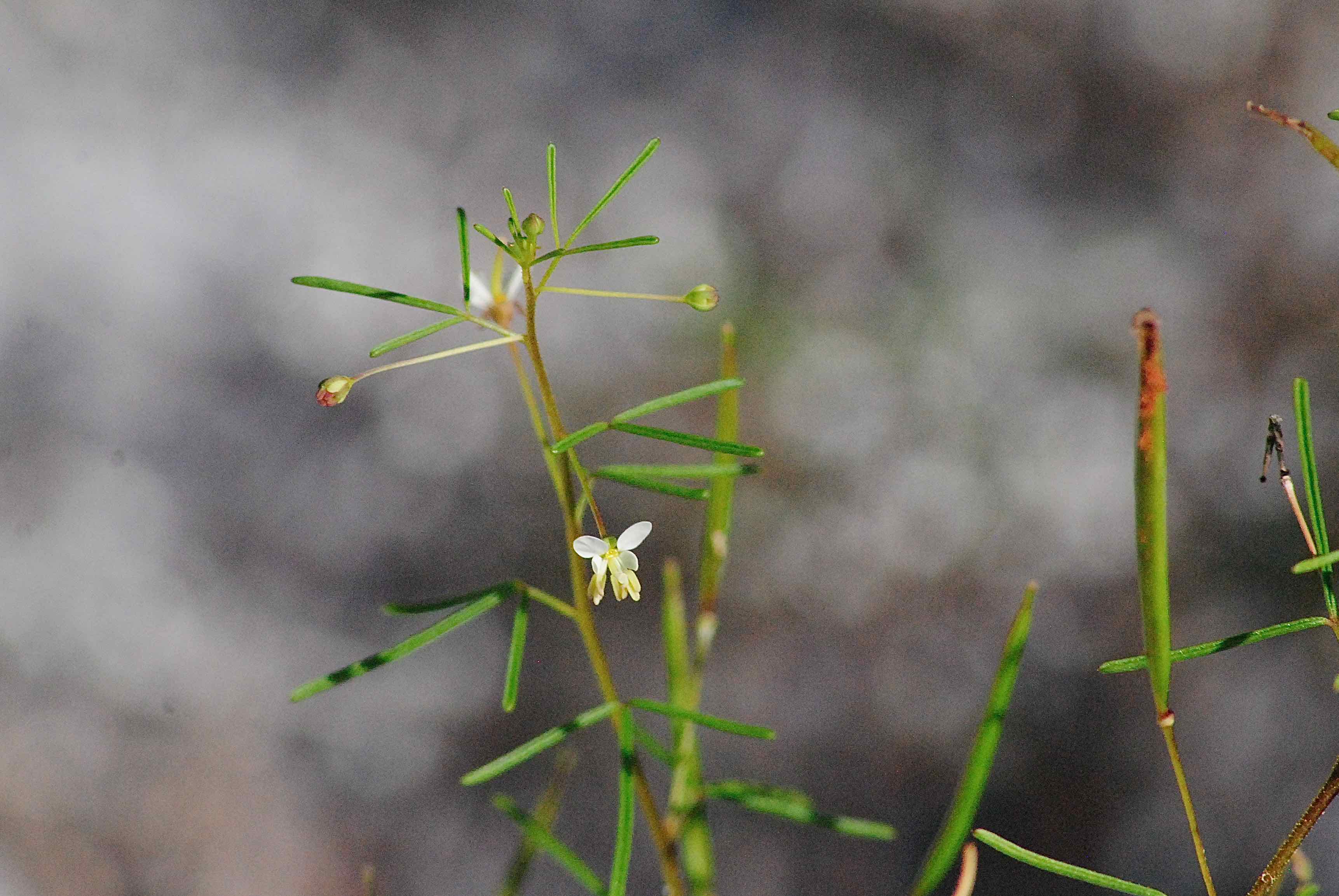
Slenderleaf clammyweed, photographed at Yamato Scrub Natural Area, Boca Raton, Palm Beach County, in August 2014.
Slenderleaf we get. But clammyweed? Well, as we understand it, the whole family is called clammyweeds. Which brings up another question: which family are we talking about? We'll get to that in a bit.
This much is clear: slenderleaf clammyweed, Polanisia tenuifolia, has a pretty, little flower and makes its home in South Florida's drier habitats. It can easily be overlooked, the plant is so spare, but you begin to appreciate its beautify the moment you notice it. It's one of our favorites.
It does have long, slender leaves — barely more than needle-like — so that part of its name makes perfect sense. But clammyweed? The flower does look vaguely (very vaguely) like a clam shell wide open. We think it more closely resembles a butterfly, or perhaps a bow. Maybe another member of the clammyweed tribe bears a stronger resemblance to the mollusk. Which brings up the other part of the mystery. Our research found references to three different families to which slenderleaf clammyweed supposedly belongs: Brassicaceae, (mustards) Capparaceae (capers) and Cleomaceae (a large and somewhat obscure family who's members include jackass clover. Jackass clover?). We'll go with Cleomaceae, since that's the most recent.
In any regard, slenderleaf clammyleaf likes sandy soil and full sun. It's found in scrubs and pinelands. According to the Institute for Regional Conservation, it's a rare plant in South Florida, but no agency lists it as threatened or endangered within its range, which extends throughout the Sunshine State into Georgia, Alabama and Mississippi, according to the U.S. Department of Agriculture. We've seen it in scrubs in Palm Beach and Broward counties. It's not so much that the plant is rare within its habitats as it is that its habitats are rare.
The IRC lists it as occurring in 21 conservation areas scattered through every South Florida county except Monroe. We usually see it in large, loose colonies. Other sources say slenderleaf clammyweed's "global" population is secure but does face threats from housing developments and shopping center construction, or, in other words, loss of habitat.
Slenderleaf clammyweed grows about two feet tall, taller than it is broad. It is an annual plant, blooming in South Florida from spring through summer and into fall. It is a host plant for the checkered white, Florida white and great southern white butterflies.
Other common names for slenderleaf clammyweed include catchfly and pineland catchfly. The names come from the sticky sustance the plant secretes, which occasionally collects an unfortunate bug or two. At least this name makes perfect sense.
Click on photo for larger image
Links for Slenderleaf Clammyweed



